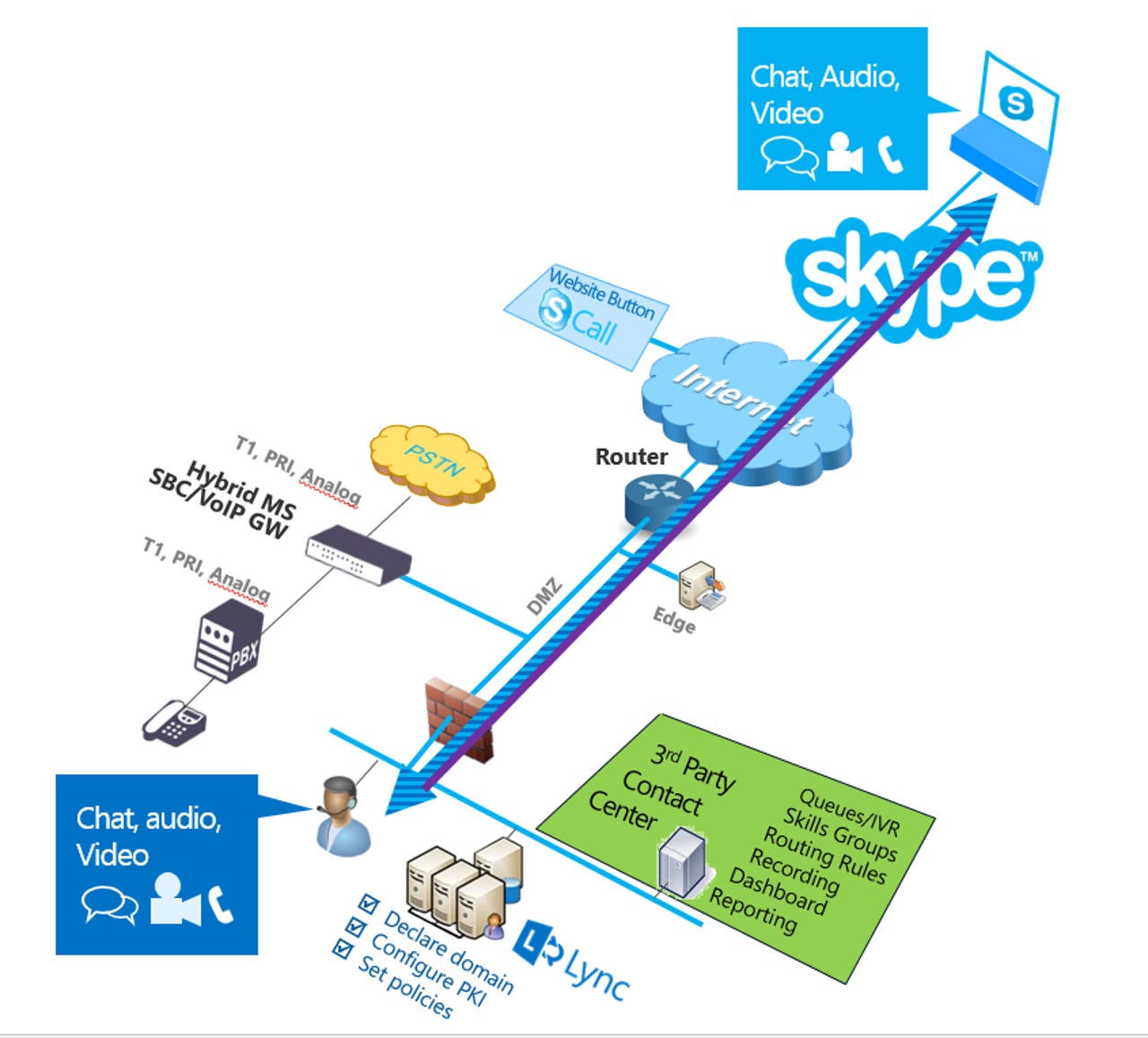Lync and Skype together - here's how it will work

One of the main news stories from last week's Lync Conference in Las Vegas was that the next release of Lync would support not just Skype audio and IM, but also video.
The intention is to provide tools that will allow the millions of Skype users to interconnect with Lync, providing new channels for businesses to connect with customers, users and partners. The big question, then, is how will it work?
In the original Skype/Lync federation architecture, both signalling and media followed the same paths through the cloud federation service. That's all very well for relatively low bandwidth services like voice and IM, but it's likely to form a bottleneck for video.
That's why in the second generation federation architecture, signalling is still passed through the federation service, while media are delivered peer-to-peer — even for Lync clients and servers that sit behind the firewall.

Client software is currently being tested, as getting the two to work together will entail delivering new codecs to Lync; specifically giving Lync Skype's SILK audio codec. While video will be carried using the familiar H.264, SILK will give Lync access to Skype's HD audio capabilities.
As Skype's Barry Castle told us, improved audio means longer calls, and more interaction in meetings. It's easy then to imagine a meeting where home attendees log in via Skype, and who then remain part of the meeting rather than dropping out due to poor call quality.
Skype used to be famous for the ways it would find to get across networks, and back in my consulting days I would rely on its skills to stay in touch with colleagues when working on client sites — in one case watching it use an open FTP port to get around the firewall protecting a rather paranoid client's network. With a peer-to-peer connection for media, getting across the firewall to connect Lync to Skype could have remained an issue. However things are now very different.
That's because future versions of Skype and Lync will support the standard STUN, TURN and ICE protocols for media traversal. Using standard protocols will make it easier for admins to control access, and to manage bandwidth. They'll also make it much more acceptable for staff to use Skype, if they're installing it on their own BYOD devices.
Getting your Lync system set up to communicate with Skype is as simple as setting up public internet messenger connectivity (PIC) — so if you'd configured Lync to work with Live Messenger, you're already set up to work with Skype, even if you're using Office 365 and Lync Online.
Users will be able to add Skype contacts to their contact list, as long as they are using a Microsoft account to use Skype. Skype users will be able to search for Lync users by their SIP address — which should be their Lync account address.
There's another bonus to version 2 of Lync/Skype federation: support for encrypted conversations. You'll be able to secure conversations with TLS or sRTP, making it possible to use Skype and Lync in regulated businesses; letting medical and financial services allow customers to call in via Skype while ensuring that they meet their PCI and HIPAA requirements.
Bringing Lync and Skype closer together makes a lot of sense. One is a secure, managed communication tool that's designed for enterprise desktops, the other a widely available consumer app that can be installed on pretty much any desktop, laptop, phone, and tablet.
Making it easy for one to connect to the other means that those 300 million plus Skype users are now able to talk directly to the person they need to talk to, without having to pay a penny — and with video and HD audio.